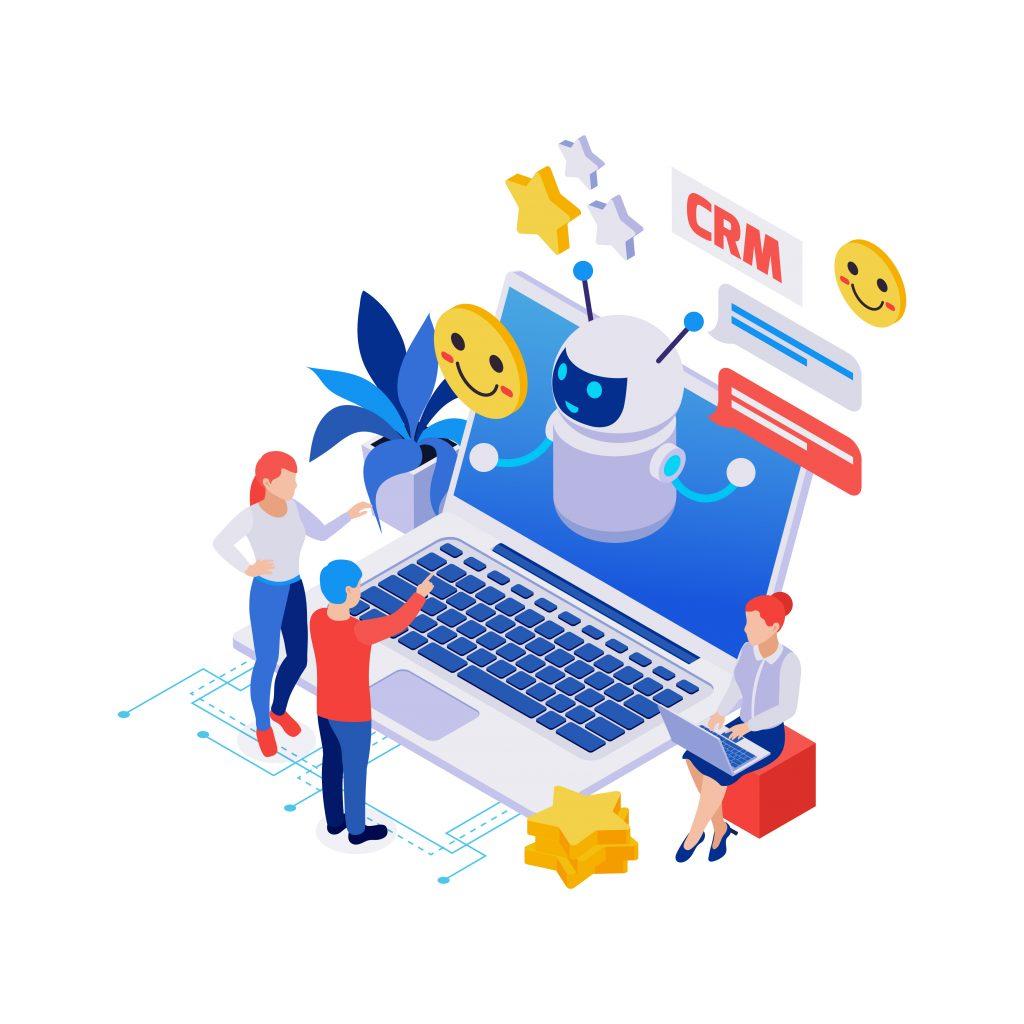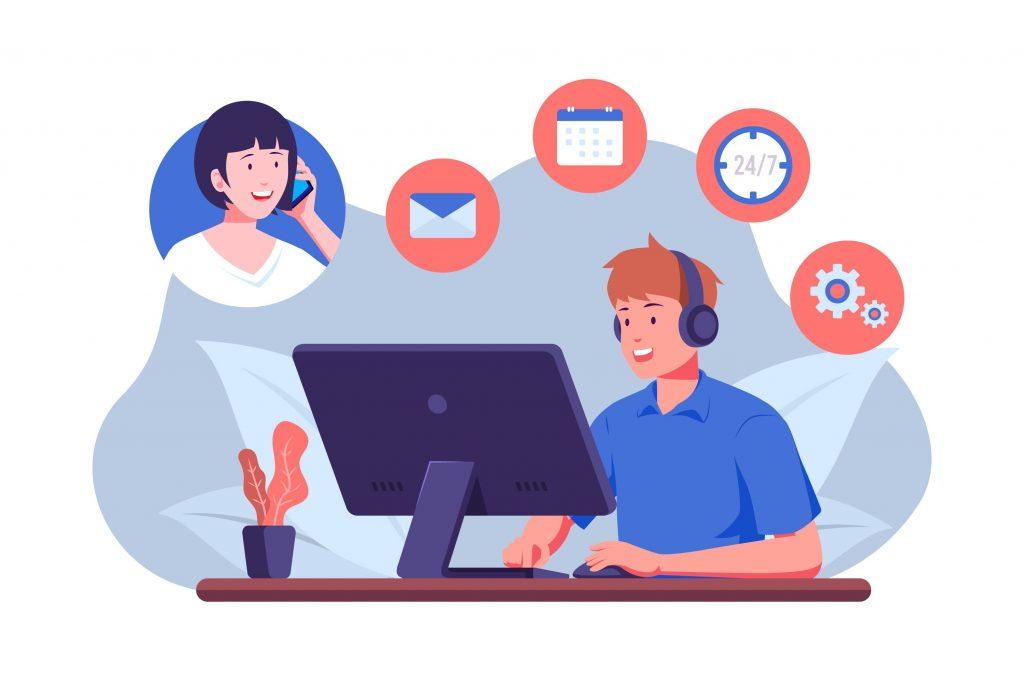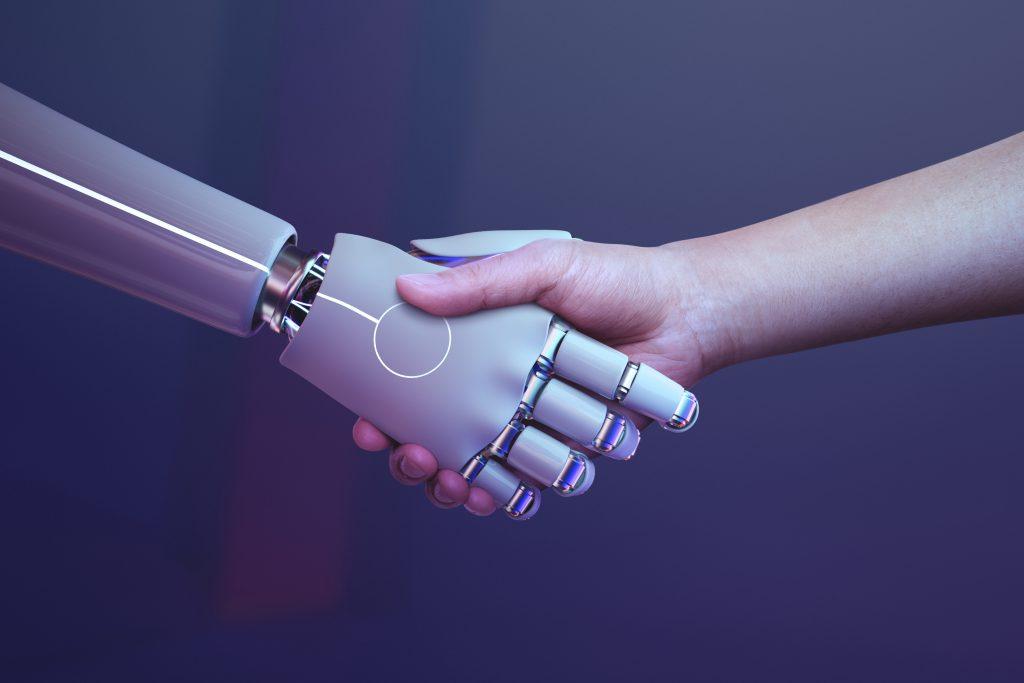Updated on February 12, 2025
Customer service has always been important, but as the economy becomes more competitive, it is even more important that clients have a smooth interaction with your company. That’s the only way to retain customers and continue to grow in this economic climate. In this blog post, we dig deep between chatbots vs. humans for your customer service strategy.
Making sure customers have an amazing interaction with your company should be priority #1. They’ve written in with a problem or question, and want answers fast. If they don’t get it, they won’t stick around long.
There are two major options for companies: chatbots and humans.
Both present costs and benefits, and it’s important to weigh them against each other. Chatbots are relatively new to the customer service world, but they’re quickly becoming a popular way to provide highly efficient real-time service.
The global chatbot market was estimated to be worth $396.2 million in 2019 and is projected to reach $1.95 billion by 2027. That is extremely rapid growth and is a sign of things to come on the AI front. But it makes sense when you think about the total scope of customer service and sales. If chatbots can help make these functions work better and for lower cost, the value is technically limitless.
The U.S. Bureau of Labor Statistics estimates that there are 2.9 million people working in customer service in the United States. They also previously estimated that 13.75 million people (or 4.3% of the population) worked in sales. The scale of both of these figures shows that there is massive potential for chatbots to change processes. That’s a lot of people who can either be replaced or empowered to do a better job with chatbots.
They can often be programmed to use natural language processing to ensure the chatbot provides the best answer possible. There are also specialized chatbots designed for tasks like booking airline tickets or requesting restaurant reservations. Each of these options has certain situations where it is more useful.
Strengths Of AI Chatbot In Customer Service

Chatbots are changing how customer service works, largely because of the different economics of running a chatbot vs. a living employee.
Reduced Cost
Chatbots require less upfront financial and time investment than humans do. One chatbot can service a lot more customers than a single customer service representative, which means they scale very quickly. They also require less training, and may only need minor tweaks to their business logic from time to time.
No Language Barrier
Chatbots are capable of speaking in any language, so there’s no language barrier or new hiring necessary in order to service a certain language.
Better Response Time
Chatbots don’t need to make decisions about how to respond, and are able to provide an identical customer service experience whether a customer is asking about a general question or an extremely specific one. This can make them seem like they’re more attentive and responsive than actual human employees.
Available 24/7
Of course, as a programmed entity, chatbots are available 24/7. Chatbots are also cheaper to operate than human employees since it’s not necessary to provide them with food, clothing and shelter.
Machine Learning Technology
Generative AI Chatbots can also benefit from machine learning technology. When a chatbot receives input from multiple users, it can learn how to respond to specific questions based on past responses. This makes it possible to build a single chatbot in which different users will get different answers depending on their individual needs.
Strengths of Humans in Customer Service

As much as you’d like to automate your customer service, humans can still do some functions better than artificial intelligence.
1. Empathize with the customer
Empathizing with customers is key because they’re more likely to interact with you again if they feel they’ve been treated properly. If they feel as though their concerns have been addressed, they’re less likely to complain about products or services on social media or elsewhere.
2. Provide culturally sensitive customer service.
If your company or product is targeted at a particular audience or market, then it’s important to be sensitive to their needs and concerns when delivering your product or services. This can mean providing translations for international customers, for example, or adopting policies for American consumers so that they’re understood in their native tongue.
3. Deal with human emotions on the fly.
Some situations call for a level of emotional intelligence that people aren’t born with but can develop through training and practice. Customer service agents must be able to deal with high-pressure situations like when a customer is angry or disappointed, and chatbots are not (currently) able to handle those situations.
When to Use a Chatbot
Taking all this information into account, there are 3 situations where it makes the most sense to use chatbots.
When your human agents are offline
Chatbots never sleep, so you can be sure there’s always someone there to answer a customer’s question, even if it comes in at an unreasonably late time. The same applies for when all your customer service representatives are overloaded.
As a sales channel
If a potential customer arrives ready to buy, a chatbot can facilitate the sale while providing personalized recommendations along the way. If people are going to buy online, you may as well use chatbots to provide a streamlined and personalized service.
For faster onboarding
One thing we can say for sure about bots is you’ll never have one quit or struggle with training. So as you are training up your human agents, use a chatbot to handle the extra capacity. This way, you can scale more quickly than if you just trained one representative at a time.

Comparison of chatbots and humans based on their strengths
Based on this analysis, there are 4 key areas where chatbots excel over human representatives:
No Maintenance Costs: Chatbots don’t require training, office space, employees, or anything else. Once they are set up, they are good to go and it is up to you if you want to improve on them.
Simple Setup: They’re also easy to set up, which means you don’t have to spend a lot of money on hiring someone.
Faster Responses: Chatbots have lower response times and are always available.
Infinite Scalability: One chatbot can service nearly unlimited customers at the same time.
Industry Use Cases of Chat Bots
Customer service is relevant in nearly every industry, but we’ve found that there are specific areas where they can be leveraged for significant returns:
Banking
Anyone who’s ever had to deal with banking customer service before knows what a hassle it can be. Banking chatbots can streamline the process and handle frontline customer support. Already, banks around the world are adopting chatbots and seeing great results.
SaaS Companies
Driving more sales is the top priority of almost every organization. However, depending on the long-term value of a customer, certain courses of action may end up being impractical. SaaS companies generally have a lower customer LTV and also lower customization required, so a chatbot can effectively serve leads and create a high-level win for the company.
E-Commerce
Brands are realizing that email marketing has nothing on the engagement levels of SMS notifications and chatbots. Rather than using chatbots just for customer support, they can be a key part of the funnel by notifying users when their shipment has been posted or delivered, or by collecting feedback on the company. This feels more personalized than a form email and can upsell a customer, thus directly contributing to the bottom line and fitting into the marketing funnel.
The Future of Chatbots
It’s easy to think of chatbots in the context of simple business processes like lead generation or customer service, but it’s quickly becoming clear that this machine learning technology has not even skimmed the surface of what it can do for humanity.
For example, studies are already being done on how a chatbot could help patients with dementia or Alzheimer’s. This alone should get you thinking about the interactions you have on a day-to-day basis, and how they could be streamlined or used to improve your life (or the life of those around you).
Another example that is less grandiose is how chatbots are being used for branding campaigns. Marvel ran a campaign for Guardians of the Galaxy (and Spiderman, soon after) that allowed fans to interact with the chatbot. This sort of interactive experience is exactly what users are geeking out over. And excitement leads to sales!
Finally, for anyone who has ever stayed up late trying to match their symptoms up to an online diagnosis, there are now chatbots to help with this. As telemedicine continues to expand, we expect this functionality to improve significantly. Soon, users will *want* to deal with chatbots for the first few minutes because they’ll know it gets them better outcomes.
Enhance support workflows, accelerate resolutions, and boost efficiency with AI-powered email ticketing from KommunicateHow Chatbots And Human Agents Can Work Hand In Hand

Making customer service a competitive advantage is a major priority for companies right now. Technology has streamlined so many processes that now the experience has become much more important for keeping customers. The biggest problem with chatbots is that they still require a level of human input, and while they’re getting better at understanding what you’re saying, there’s no guarantee that they’ll pick up on every nuance or question right off the bat.
That means it’s important for companies to keep monitoring their chatbot systems for new questions and patterns and respond accordingly. This is the “combination” approach, which we recommend.
Chatbots are a popular tool for customer service because they’re cheap to design and run. Since there’s no human interaction, the interface is simple — you just type in a question and get an answer.
However, in some ways, the market hasn’t caught up yet. People still prefer the human touch over machines, as demonstrated by this 2018 study showing that ~50% of UK respondents and ~40% of US respondents said they’d prefer to speak with a person. We’re sure this number has shifted by now, but that is still something to be aware of when implementing a chatbot strategy.
Humans are still better at many things, including emotional intelligence, which makes them better listeners and communicators. One of the great benefits of humans is that they can adapt to your needs over time. They may not be able to provide a perfect answer every time, but they’ll learn your preferences and anticipate what you want next.
Chatbot vs. Human – Who Wins?
Chatbots are a trend that is likely to continue for the foreseeable future. Customer service representatives, however, are not going anywhere anytime soon. There are pros and cons to both, and it’s important to know all of them before deciding which one to use in your business.
In general, chatbots are a great way for customer support to cut costs. There are many situations where there’s less need for an actual customer service representative. This is a chance for companies to save money by not paying someone to actually handle client questions.
Chatbots may not be taking over the world and obsoleting human representatives, but they are making a dent in the customer service industry. They’re already being used in various fields, from banking to online shopping. They can be programmed to a specific task and can make your business run better. For more information on how a chatbot may be able to help your company, start a conversation with Kommunicate today.
Manab leads the Product Marketing efforts at Kommunicate. He is intrigued by the developments in the space of AI and envisions a world where AI & human works together.
At Kommunicate, we are envisioning a world-beating customer support solution to empower the new era of customer support. We would love to have you on board to have a first-hand experience of Kommunicate. You can signup here and start delighting your customers right away.



![What is Conversational Intelligence [Benefits + Features] cover image of conversational intelligence.](https://www.kommunicate.io/blog/wp-content/uploads/2025/04/Featured-Images-1-1-1.avif)

